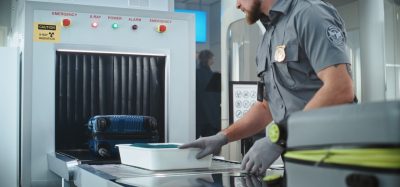The cyber challenges we face in the world of ATM
Posted: 4 April 2017 | Matt Shreeve | Helios | No comments yet
What challenges do we face in the ATM universe with respect to the cyber threat?


Cyber security and resilience are now accepted as key requirements for air traffic management (ATM), and indeed the wider aviation system. But the hard work is only just beginning, particularly for air navigation service providers (ANSPs), as next-generation ATM systems and infrastructure are deployed.
The context is difficult: a changing regulatory environment, a need for a minimum industry level of security and increasingly sophisticated cyber attacks. But what specifics are stopping ANSPs ‘implementing’ cyber security? Here’s my big four:
Join us live: Shaping the Next Generation of Hold Baggage and Air Cargo Screening
Join us live for an insightful webinar on 11th December at 14:00 GMT, in collaboration with Smiths Detection, as we explore the strategic balance of operational efficiency, regulatory compliance, and sustainability in high-volume security environments.
This session offers a focused look into future-proofing your security strategy.
Key learning points
- Cost Reduction: Strategies to minimize bag travel time while simultaneously reducing operational costs.
- Regulatory Roadmap: Insights into the next wave of regulatory changes and their impact on future investment decisions.
- Sustainable Systems: Practical approaches to building sustainability into security systems and lowering the total cost of ownership (TCO).
- Scalable Solutions: Real-world examples of scalable systems supporting current airport growth and preparing for tomorrow.
Register now for expert insights, case studies, and actionable strategies on operational efficiency!
- Legacy systems and Operational Technology: ATM is not traditional IT. Introducing controls such as intrusion detection and event-level auditing on old equipment is hard and expensive. Operational Technology, such as Industrial Control Systems and ‘Smart Infrastructure’, is a new focus of attack, as the December 2015 cyber attack on the Ukrainian electricity network highlighted.
- Lack of people with deep technical expertise: Few people understand both ATM and cyber security, and cyber itself has many separate specialisms.
- No clear ‘Means of Compliance’: ANSPs effectively need to decide themselves on when security has been assured. This needs to be neither ‘not too much’ (overly expensive) nor ‘not too little’ (residual risk is too high). It also needs to flow down (often vast) supply chains.
- Insecure systems cannot be assumed to be safe: Establishing the right touchpoints between safety and security processes is crucial. The lack of accepted practice, and different cultures, poses problems.
So, what to do?
Every ANSP should have a Security Management System (SecMS) and implementation roadmap. These provide the brains and engine for controlling and effecting activity. The SecMS demands leadership plus a classic Plan-Do-Check-Act cycle of continual improvement (How do we assure ourselves?), all underpinned by risk assessment.
It requires a clear scope (What systems and networks do we have? What is our supply chain?) and then people, process and technology aspects to be addressed (How do we know we have the right technical people? How does security interact with safety?). A roadmap leads to a progressive approach at building up cyber security and embedding requirements in new services and systems, forcing decisions on what to prioritise (Legacy? Operational Technology?).
Actions now need to match words. ATM is not yet ready to meet the threat, but a roadmap will help us get there. And since, cyber security is a never-ending arms race between attackers and defenders, a SecMS will manage threats and risks as they evolve.
For more information you can find the original article here…
The International Airport Summit is open for registration!
Date: 19 – 20 November 2025
Location: JW Marriott Hotel Berlin
At our flagship event of the year, we will dive into the future of airport operations, with expert-led sessions on passenger experience, innovative smart technologies, baggage handling, airside operations, data, security, and sustainability.
This is where global airport leaders come together to share insights, challenges, and real-world solutions.
Limited complimentary passes are available for eligible professionals – first come, first served!

















